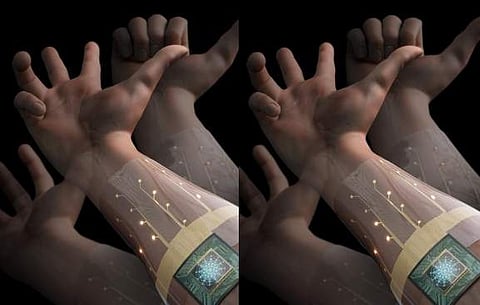
- LIFESTYLE
- FASHION
- FOOD
- ENTERTAINMENT
- EVENTS
- CULTURE
- VIDEOS
- WEB STORIES
- GALLERIES
- GADGETS
- CAR & BIKE
- SOCIETY
- TRAVEL
- NORTH EAST
- INDULGE CONNECT

Imagine a 3D printed soft robotic hand that is agile enough to play Nintendo's Super Mario Bros, and win too.
Researchers led by University of Maryland assistant professor of mechanical engineering, Ryan D Sochol, have worked on 3D print fully assembled soft robots with integrated fluidic circuits in a single step.
"Previously, each finger of a soft robotic hand would typically need its own control line, which can limit portability and usefulness," explained co-first author Joshua Hubbard.
"But by 3D printing the soft robotic hand with our integrated fluidic transistors, it can play Nintendo based on just one pressure input," Hubbard added in a paper published in the journal Science Advances.
The inherent safety and adaptability of soft robots has sparked interest in their use for applications like prosthetics and biomedical devices.
Unfortunately, controlling the fluids that make these soft robots bend and move has been especially difficult - until now.
In addition to the Nintendo-playing robotic hand, Sochol's team also reported terrapin turtle-inspired soft robots in their paper.
"Recently, several groups have tried to harness fluidic circuits to enhance the autonomy of soft robots," said co-first author of the study, Ruben Acevedo, "but the methods for building and integrating those fluidic circuits with the robots can take days to weeks, with a high degree of manual labor and technical skill."
To overcome these barriers, the team turned to "PolyJet 3D Printing," which is like using a colour printer, but with many layers of multi-material 'inks' stacked on top of one another in 3D.
"Within the span of one day and with minor labor, researchers can now go from pressing start on a 3D printer to having complete soft robots - including all of the soft actuators, fluidic circuit elements, and body features - ready to use," said study co-author Kristen Edwards.
At present, the team is exploring the use of their technique for biomedical applications including rehabilitation devices, surgical tools, and customisable prosthetics.
*Edited from an IANS report